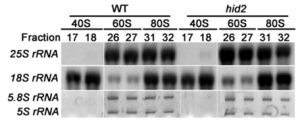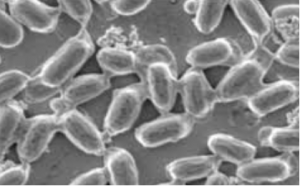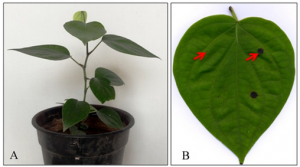|
Evidence of capsaicin synthase activity of the Pun1-encoded protein and its role as a determinant of capsaicinoid accumulation in pepper
Monday, 2015/04/13 | 08:04:34
|
|
Kana Ogawa, Katsunori Murota, Hanako Shimura, Misaki Furuya, Yasuko Togawa, Takeshi Matsumura and Chikara Masuta BMC Plant Biology 2015, 15:93 doi:10.1186/s12870-015-0476-7 Abstract
BackgroundCapsaicinoids, including capsaicin and its analogs, are responsible for the pungency of pepper (Capsicum species) fruits. Even though capsaicin is familiar and used daily by humans, the genes involved in the capsaicin biosynthesis pathway have not been well characterized. The putative aminotransferase (pAMT) and Pungent gene 1 (Pun1) proteins are believed to catalyze the second to last and the last steps in the pathway, respectively, making the Pun1 protein the putative capsaicin synthase. However, there is no direct evidence that Pun1 has capsaicin synthase activity. ResultsTo verify that the Pun1 protein actually plays a role in capsaicin production, we generated anti-Pun1 antibodies against an Escherichia coli-synthesized Pun1 protein and used them to antagonize endogenous Pun1 activity. To confirm the anti-Pun1 antibodies’ specificity, we targeted Pun1 mRNA using virus-induced gene silencing. In the Pun1-down-regulated placental tissues, the accumulated levels of the Pun1 protein, which was identified on a western blot using the anti-Pun1 antibodies, were reduced, and simultaneously, capsaicin accumulations were reduced in the same tissues. In the de novo capsaicin synthesis in vitro cell-free assay, which uses protoplasts isolated from placental tissues, capsaicin synthesis was inhibited by the addition of anti-Pun1 antibodies. We next analyzed the expression profiles of pAMT and Pun1 in various pepper cultivars and found that high levels of capsaicin accumulation always accompanied high expression levels of both pAMT and Pun1, indicating that both genes are important for capsaicin synthesis. However, comparisons of the accumulated levels of vanillylamine (a precursor of capsaicin) and capsaicin between pungent and nonpungent cultivars revealed that vanillylamine levels in the pungent cultivars were very low, probably owing to its rapid conversion to capsaicin by Pun1 soon after synthesis, and that in nonpungent cultivars, vanillylamine accumulated to quite high levels owing to the lack of Pun1.
See: http://www.biomedcentral.com/1471-2229/15/93#
Figure 1. Western blot analysis of the Pun1 protein in the pungent variety ‘Chosen’ and the nonpungent bell pepper using anti-Pun1 antibodies. As indicated by the arrow, the Pun1 protein was detected in the total proteins isolated from placental tissues of ‘Chosen’ by polyclonal antibodies against the E. coli-synthesized Pun1 protein (left). The Coomassie brilliant blue-stained gel is shown as a loading control (right). Asterisks show nonspecific bands.
|
|
|
|
[ Other News ]___________________________________________________
|


 Curently online :
Curently online :
 Total visitors :
Total visitors :
(20).png)



















